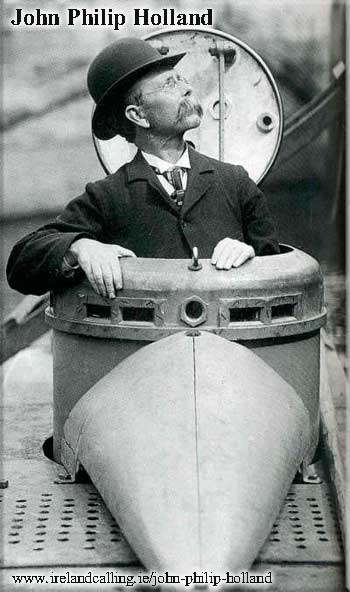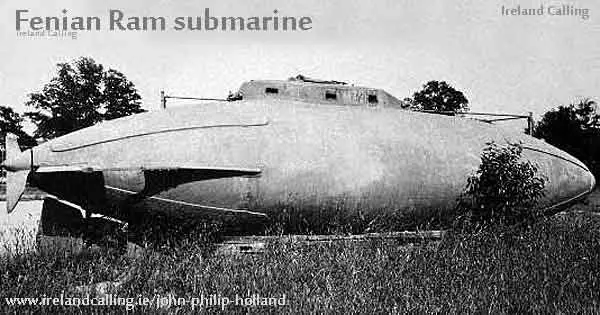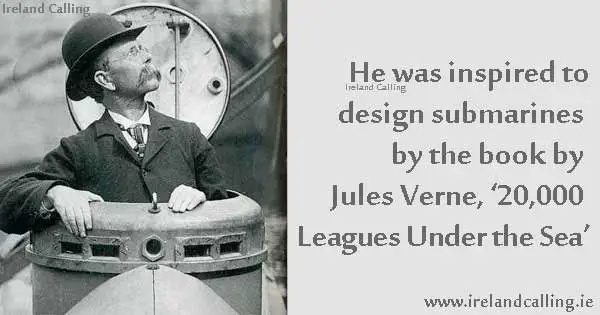The man who invented the United States Navy’s first modern commissioned submarine (the first military submarine of the United States was the 1775 submersible USS Turtle) was Irishman, John Philip Holland. He was born in Liscannor, County Clare in 1840.

He spent his early adult life as a teacher in Limerick and Cork for the Christian Brothers.
He had a keen interest in science and was inspired to design submarines by the book by Jules Verne, 20,000 Leagues Under the Sea.
Holland met the Fenians
Holland left Ireland for Boston, USA in 1873 where he was reunited with his family who arrived in Boston some time earlier. He worked as a teacher and an engineer.
His brother Michael had become involved with the Fenians and introduced them to Holland. They liked his submarine plans and wanted to use them against the British navy.
They envisaged a ‘Trojan horse’ style attack where by a submarine could be hidden inside a harmless looking merchant ship which would be able to get close to the British navy ships.
When it was close enough, the submarine would exit through the bottom of the ship underwater and attack the British ships.
Submarine designs submitted to US Navy
Two years after arriving in the United States, he submitted designs he had developed for a submarine to the US Navy. The designs were never put to use by the navy who mocked them as the work of a ‘civilian landsman’.
Despite this setback, Holland continued his research and development. He was able to quit his teaching job and work on it full time thanks to funding from the Fenians.
His relationship with the Fenians was short lived, however, and they went their separate ways six years later after a row over money.
This was not before the launch of the Fenian Ram submarine in 1881, which can be seen today at the Paterson Museum in New Jersey.

Holland experimented and improved his design
After parting company with the Fenians, Holland continued to work on experimental designs. In 1897 he launched a submarine that was powerful enough to travel for four hours beneath the surface of the water.
It was the first of its kind and superior to similar vessels being developed in France. It was powered by both electric motors and gasoline engines.
The batteries for the electric motors were recharged by the gasoline engines .
The successful arrival of USS Holland
This time the US Navy was suitably impressed. They purchased the submarine in 1900 and it became known as USS Holland.
The navy then ordered six more to be built. Holland later sold his designs to other navies including the British and Japanese.
He continued working on innovative submarine designs and created the Holland II and Holland III, although he became more interested in aviation before his death aged 74.
John Holland was a teacher in the Christian Brothers School in Drogheda. The monastery is now The Scholars Town House Hotel and there is a very large plaque erected to him there.


